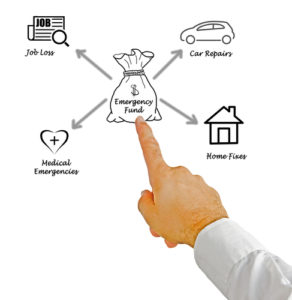 By Alyssa Furtado, RateHub.ca
By Alyssa Furtado, RateHub.ca
Special to the Financial Independence Hub
You can’t plan for something you don’t know is coming.
Accidents and emergencies are inevitable and a financial cost is often attached to these surprise incidents. So what do you do when you find yourself with an unexpected emergency expense? One option is to use balance transfer credit cards.
Balance transfer credit cards are great tools to help you pay off your debts sooner. They offer a low interest rate (sometimes 0%) for any debts you transfer to the card for a limited period of time. By minimizing interest costs, the money you put towards your debt will directly pay off the amount owing and not go towards fees. While there can be costs associated to balance transfers — like a fee of 1% to 5% for transferring a balance or an annual fee — the interest savings can outweigh the cost of the fees.
So how can you strategically use a balance transfer credit card for emergency expenses? Charge whatever emergency expense you make to a card you already have, immediately apply for a balance transfer card, and quickly transfer over the balance to the new credit card.
There are considerations you need to know before applying for a balance transfer credit card, such as:Don’t use the balance transfer card for new purchases
New purchases will not receive the same 0% APR balance transfer offer. They’ll be subject to a much higher interest rate, normally between 12% and 20%.
The better your credit score, the better the offer you receive
You’re more likely to get approved for a 0% APR for 12 months, like the MBNA Platinum Plus MasterCard, when you have good credit. Having good credit shows financial institutions that you’re financially responsible and a low credit risk.
This is only a temporary solution
Special balance transfer rates are only offered for a limited time. The promotional periods usually last from six to 12 months. Once the promotional period is over, your balance will be subject to a much higher interest rate. Therefore, you don’t want to develop an “I’ll pay it off later” mentality and put yourself in a bigger hole by not paying off your debts quickly.
Calculate the fees before you apply
Because not all balance transfer cards offer a 0% APR, after you take into account the transfer fee and annual fee, the cost of moving your money might outweigh the actual interest savings. Therefore, make sure you calculate all the fees associated to the transfer and compare it to the current interest you’re paying.
If you find yourself in a situation where you charge an unexpected expense to your credit card and you can’t afford to pay for it immediately, consider using a balance transfer card. By doing this, you minimize the interest you’ll have to pay on the emergency expense and potentially save hundreds of dollars.
 Alyssa Furtado is a passionate entrepreneur, financial expert, digital marketer and educator and founder of RateHub.ca, a website that compares Canadian mortgage rates, credit card deals, deposit rates and insurance. Its goal is to empower Canadians to search smarter and save money.
Alyssa Furtado is a passionate entrepreneur, financial expert, digital marketer and educator and founder of RateHub.ca, a website that compares Canadian mortgage rates, credit card deals, deposit rates and insurance. Its goal is to empower Canadians to search smarter and save money.


Rather than messing about with credit card applications why not be preemptive and setup a line of credit – either home secured (better rate) or unsecured (still not bad at prime +3 compared to credit card rates).
HELOC may cost a bit to setup but usually you can talk them into waiving fees – unsecured usually cost nothing to setup and nothing if they are not used.
Only caveat is not to use the LOC spuriously.
Even better build up a “rainy day” emergency fund.